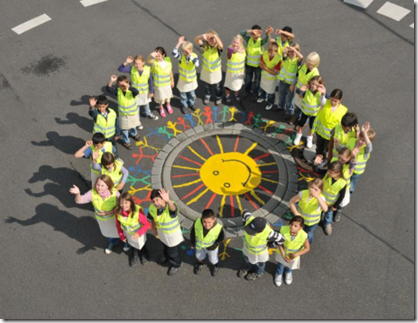 ‘A social and community psychology of resilience is needed if we are to understand why many of us are not always able to preserve well-being and sustain our progress toward the goals we have set ourselves and for those about whom we care’ Reich, J., Zautra, A and Hall, J. S., (2010) Handbook of Adult Resilience. The Guilford Press, London. P. 5.
‘A social and community psychology of resilience is needed if we are to understand why many of us are not always able to preserve well-being and sustain our progress toward the goals we have set ourselves and for those about whom we care’ Reich, J., Zautra, A and Hall, J. S., (2010) Handbook of Adult Resilience. The Guilford Press, London. P. 5.
The conceptual metaphor of ‘engineering’ cannot be applied to human resilience. The metaphor is completely out of sync with what we know about humans, communities and social psychology.
Human and social resilience is an outcome of successful adaptation to adversity over time, and is revealed in sustainability, recovery, social connection and the preservation of well being.
What do we know about fallible humans?
- Much of what we know of humans is about what we don’t know. When it comes to humans we know much about what we don’t know. We know much more of what makes humans mysterious than we have answers to all the perplexing questions about what it is to be human.
Some of these are helpful: (Sheen, On Being Human; Klein, A New Operating Manual for Being Human; Semler, Hodge and Kelly What is the Human?; Macaulay and Barrs, Being Human, The Nature of Spiritual Experience; Schwarz, The Human Being, a Theological Anthropology; Benner, Human being and Becoming)
- We know that humans are not mechanical but ecological, biological, vulnerable and mysterious. There is much about humans we simply don’t know eg. no one knows what consciousness is or how it works (https://safetyrisk.net/the-challenge-of-the-consciousness-taboo/ ). No one knows why we dream even though it consumes most of our sleeping life.
-
The mystery of love and many human emotions and feelings are neither predictable, measurable or understandable. We can’t control emotions, predict feelings or moods.
-
Humans guess through metaphysics about death and non-material being but all that is speculated through faith and belief gives no certain knowledge. After all, that’s what faith is all about, and when it comes to humans, most of what we do is faith based. We don’t know and can’t know the future, so the best we do is lots of guessing.
-
We know that humans in the paradox of fallibility live and learn resilience through experience. In human life one doesn’t know what one can bear or endure until it is experienced and endured. Resilience is a catch-22.
-
We know so little about human community and the dynamics of human connection, even about simple things like falling in and out of love. We know how to write about it, sing and perform about it but we have no idea why relationships succeed, why we fall in love or why love ‘fails’. Nor do we know why the good suffer and evil is rewarded. And we struggle through life’s injustices with heaps of luck and perseverance.
-
We also know that even the absence of illness, harm or pain doesn’t guarantee a ‘good life’ (Mackay, The Good Life; Hillman, The Good Life to The End). Similarly, that all the material wealth in the world doesn’t make for happiness, fulfilment, meaning, purpose of community.
So in light of all we do and don’t know about being human, how on earth can the conceptual metaphor of engineering have any applicability to human resilience? Even if we personify and anthropomorphize systems in an approach to resilience, we cannot divorce it from the presence of fallible humans (https://www.humandymensions.com/product/fallibility-risk-living-uncertainty/) who are the origin of systems, the ecology of human communities or the dynamics of social fallibility as if humans are mechanical cogs in a machine-as-system. Neither can we attribute humans as a ‘factor’ in a system.
When we throw metaphors (Lakoff and Johnson, (1980) Metaphors We Live By) and semiotics (Lotman, Universe of the Mind) around the risk and safety industry like they have no meaning or trajectory, we unconsciously set profound contradictions into the politics of risk and safety that create enormous barriers to transdisciplinarity and boundary crossing between knowledge cultures.



bernardcorden says
It is only when they go wrong that machines remind you how powerful they are – Clive James
Rob Long says
The trouble with human factors is that it doesn’t consider humans as anything more than a factor.
bernardcorden says
It is only when they go wrong that machines remind you how powerful they are – Clive James
Rob Long says
The trouble with human factors is that it doesn’t consider humans as anything more than a factor.